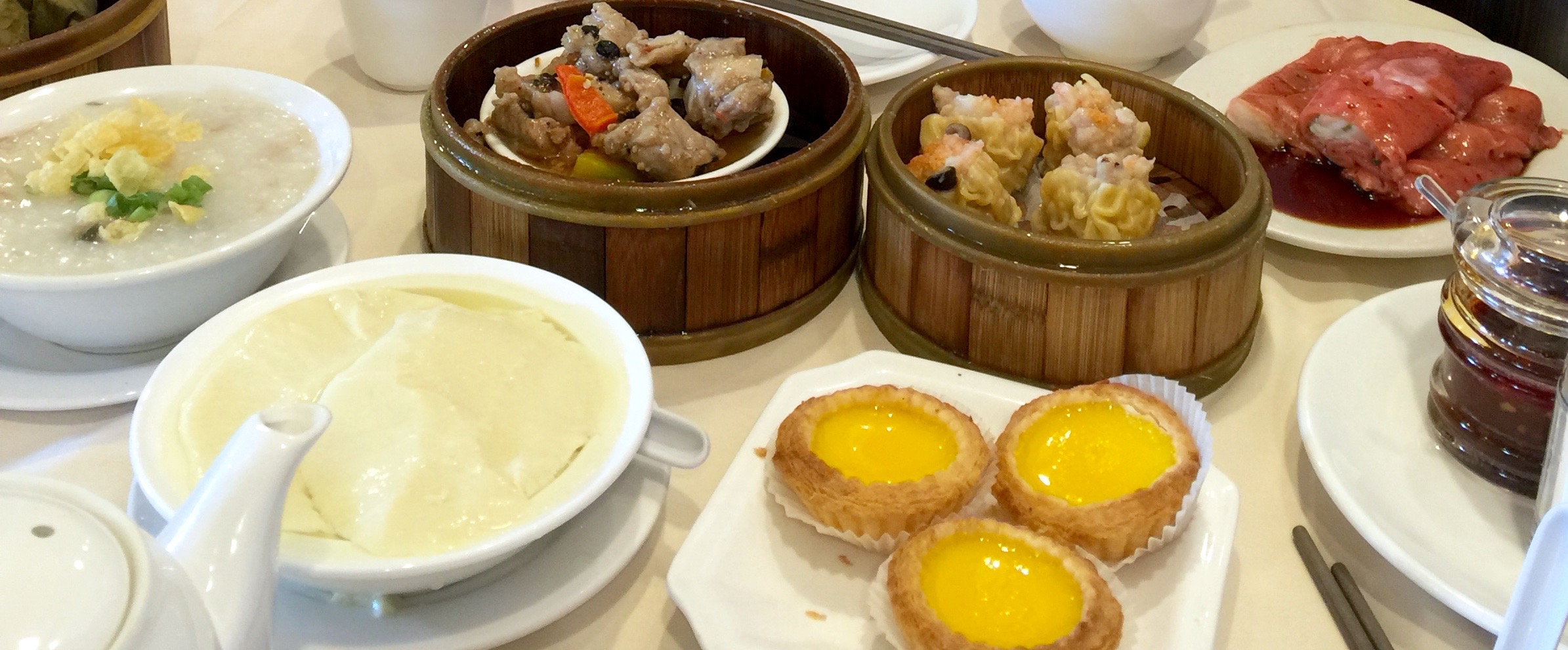
Book Review: The Dim Sum Field Guide
The Dim Sum Field Guide: Not For the Novice Dim Sum Eater

The Dim Sum Field Guide: Not For the Novice Dim Sum Eater
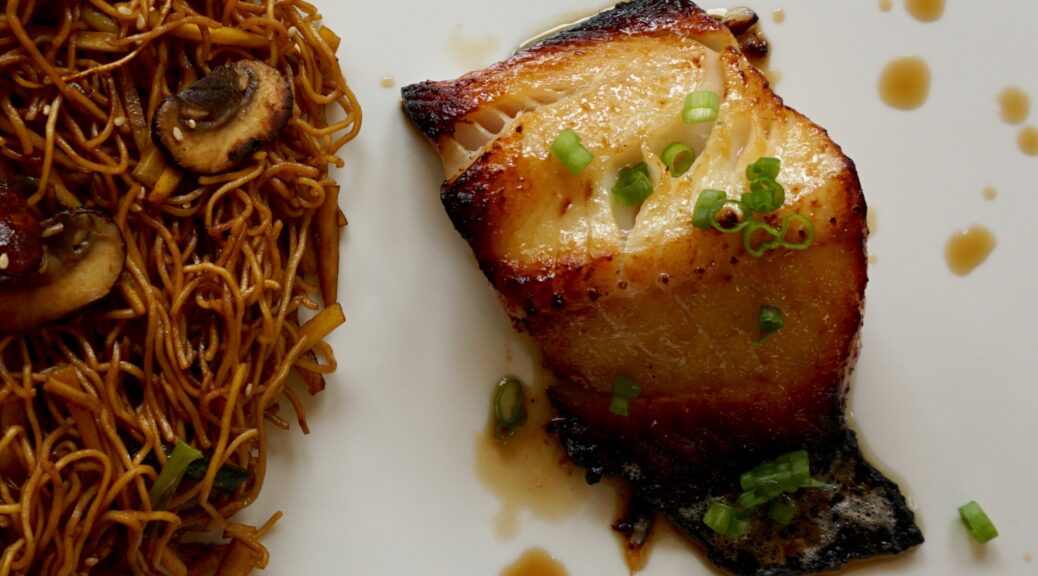
Surprised? Forehead slap in disbelief that this is not another sugar-filled dessert recipe? I know, me too! But this dish is so yummy and so simple I just had to pass it along.
Lately, I have been going to Whole Foods to shop for my seafood and meat. Why? Partially out of environmental guilt and I know this is going to sound awful because it is much easier on the pocketbook when it is just Wes and me. If you know my kids, you know what I mean. While Wes and I are feasting on sushi or a beautiful piece of grilled salmon my kids are eating dorm food or cold pizza. I’m not that cold-hearted though, they pick where and what they want to eat whenever they come home or if we go to visit them, it’s definitely no-holds barred.
While perusing the seafood selection at WF I came across some black cod also known as sablefish. I first tasted this lovely fish at a Chinese restaurant, Hong Kong Lounge, in the City and was absolutely floored. I was at a banquet and looking forward to the whole fish steamed with ginger and onions topped with soy sauce to finish the meal when…
Instead out from the kitchen comes this little chunk of fish, no head, no tail, unceremoniously plopped on a platter unadorned with any of the usual trappings. The outside had a nice toasty brown glaze, my guess, it had been roasted. Didn’t look like much but supposedly their signature dish. I took a piece and popped it in my mouth…..BAM! WOW! Flavor explosion, sweet, salty, and smokey all at once, and the texture-oh my, buttery, silky, fatty..holy mackerel, it was DELICIOUS! I raved about it all the way home, an hour’s drive from the City to Los Gatos. 
More upside, this fish is on the Monterey Bay Aquarium’s Seafood Watch sustainable fish list and it is loaded with alpha omega fatty acids…woohoo, I think we have a winner.
For the sake of transparency, though not unique to black cod…if you can cook it on your grill outside, do it. If not, I hope you have air fresheners and good ventilation in your kitchen or all the neighborhood cats will be hanging out at your house. But that’s fish for you. Oh, and it will set you back a pretty penny but oh so worth it.
I immediately bought a piece (yes, one piece, just me and Wes) and googled recipes for Black Cod. The first recipe that jumped off the screen was Nobu’s Miso Roasted Black Cod. His recipe has been shared so many times I’m sure it has rock-star status on Pinterest. It’s simple to prepare and just takes a couple of minutes to assemble. Yep, stupid easy! Make the marinade, toss it and the fish in a zip-loc bag, and let it sit luxuriating in the miso for 24-48 hours.
The marinade is all of 4 ingredients. White miso paste, Mirin (Japanese cooking wine), Sake (Japanese rice wine), and sugar. That’s it, folks. You can embellish if you want. A touch of Ponzu (citrus soy sauce), a dash of sesame oil, or a smidgen of grated fresh ginger would go well. This first time I stuck to the recipe and it was delicious but I’m sure I will experiment. It’s how I roll.
If you like fish, run, don’t walk to your nearest seafood purveyor or Whole Foods, and pick up some Black Cod. So good. Serve with a bowl of rice or with Hong Kong Style Soy Sauce Noodles (pictured). Delish.
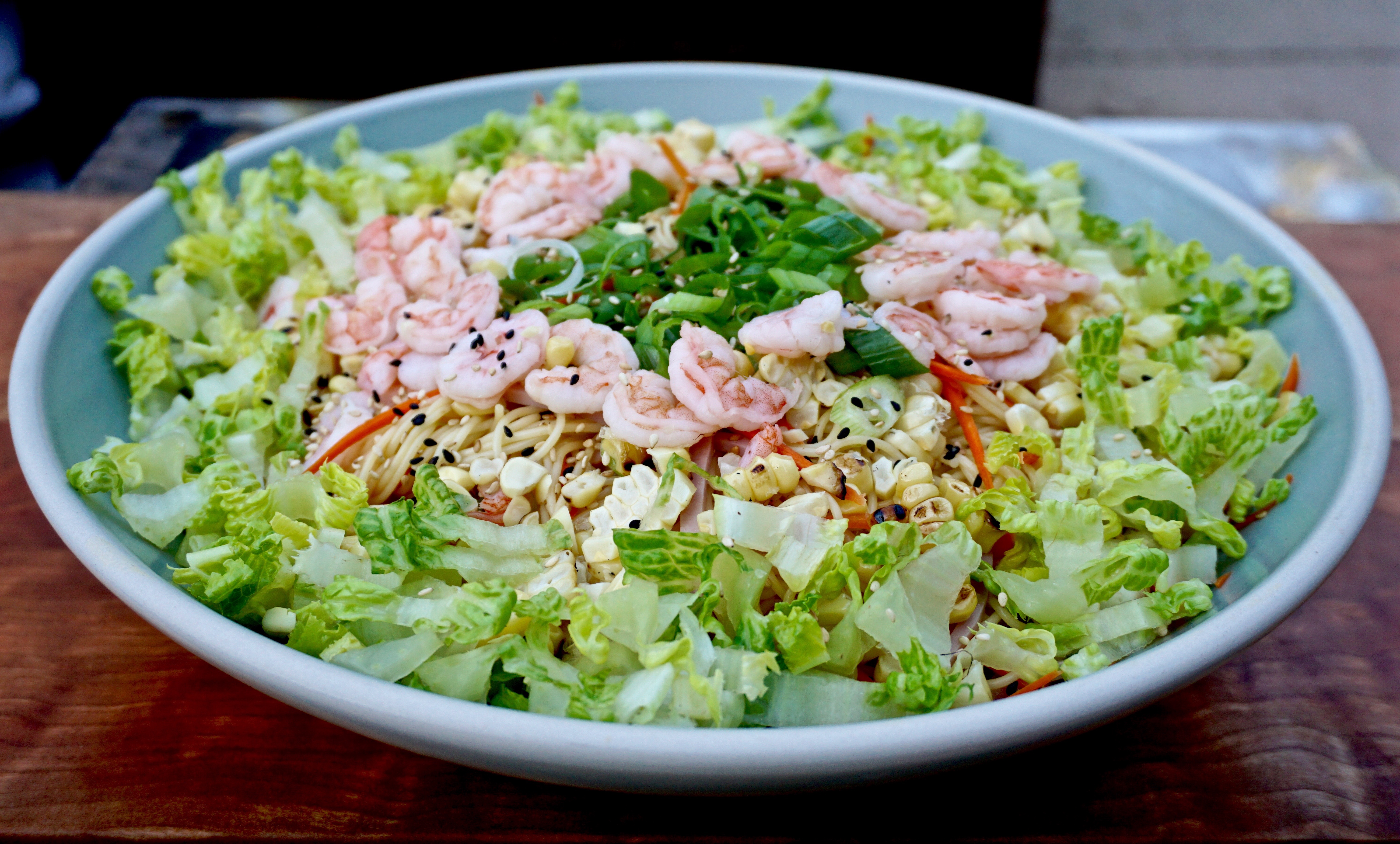
During the summer I find this thought running through my brain quite often..” hmmm, it sure is hot, what should we do for dinner? definitely not turning on the oven or standing over a hot stove. I just want something light and refreshing and satisfying”.
LOOK! Up in the sky..ok, not up in the sky just whirling in my brain, it’s a salad! It’s pasta! NO, IT’S, (music building to a crescendo)… SUPER-SOMEN SALAD!
It’s likely I asked for this recipe at a potluck or found it in a Japanese/Hawaiian Community cookbook, I actually don’t remember. This is my go-to hot weather dish for potlucks, block parties, and impromptu get-togethers. You can make it ahead of time (although it doesn’t take a ton of time), vary the toppings (which are limited only by your imagination) and it’s incredibly easy. It’s cool and refreshing, crisp, light, yet substantial.
Over the years I have modified the recipe, tweaked the dressing by adding a bit more soy sauce and sesame oil to intensify the flavor. Substituted Ponzu (citrus soy sauce) and added different vegetables for flavor and texture. Try capellini pasta in place of somen noodles (sshh, don’t tell my Hawaiian Auntie Lil, she’d slap me upside my head if she knew I was using Italian pasta!) and glamourized it by adding fresh bay shrimp or crab. Play with the ingredients and make it your own. Because I like a lot of additions, double the dressing recipe. Add to taste. A single recipe will not be enough.
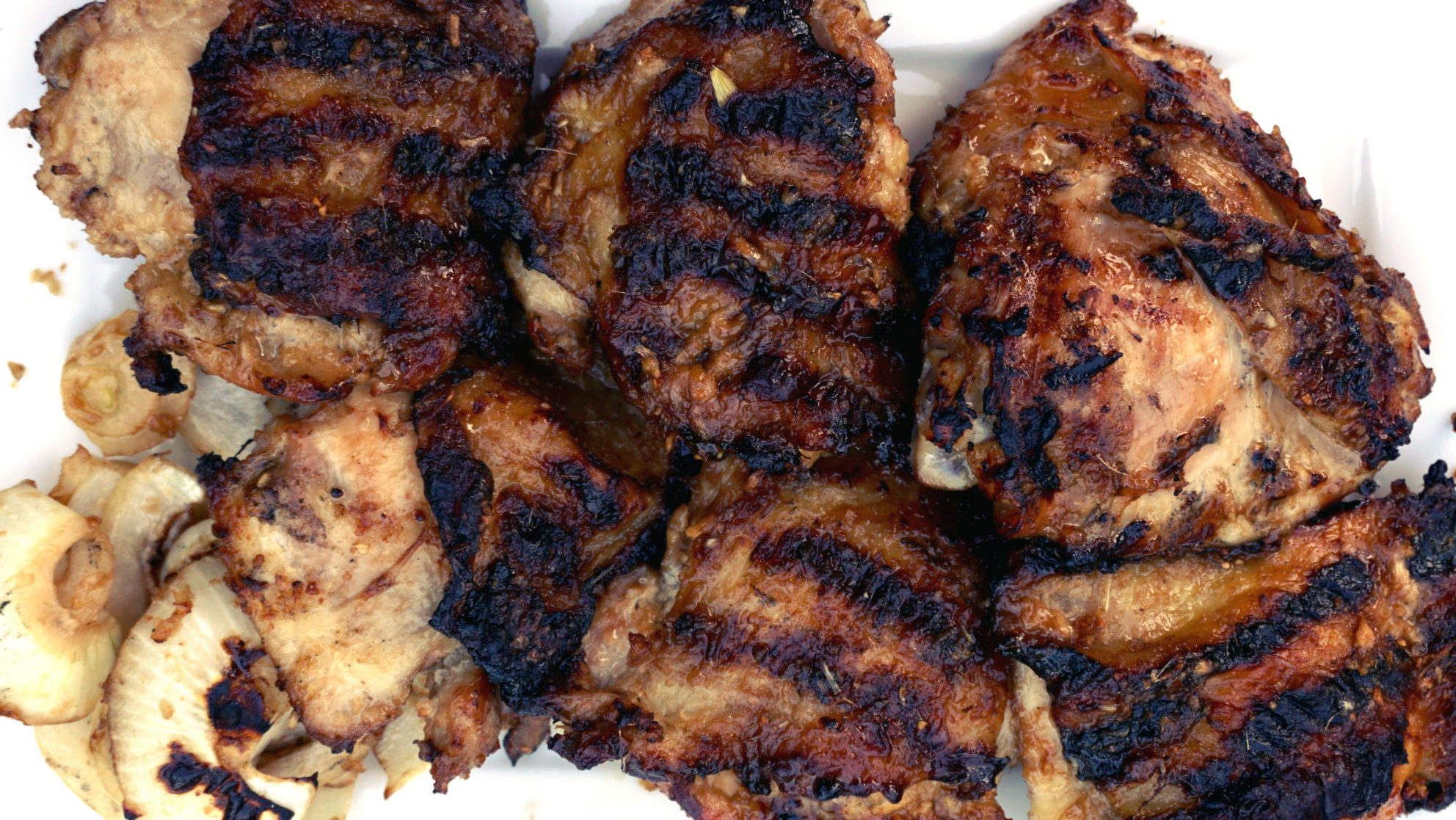
Summer! Time to fire up the grill and take the cooking outdoors. You will actually find us in our backyard cooking quite a bit and not just during the summer. Yes, we are that family that uses the barbecue at Thanksgiving or before the Rose Bowl game on New Year’s Day. While much of the country is shoveling snow we are shoveling barbecued ribs and chicken into our mouths. One of the perks of living in California.
Wes is the go to barbecue guy in our family. I realized long ago that I should stick to indoor cooking. In my defense I can make some pretty mean marinades for whatever our pit-boss is grilling. A family favorite is grilled Vietnamese Chicken. The marinade has so many bold and bright flavors characteristic of Southeast Asia-lemony, garlicky, sweet from honey and salty from fish sauce, its a taste explosion. It has definitely become one of my standard marinades for barbecue chicken. I hope it will become one of yours too. The inspiration for my marinade comes from two wonderful cookbooks I have had on my shelf for years, The Foods of Vietnam (Nicole Routhier) and The Best of Vietnamese and Thai Cooking (Mai Pham). Both are great primers for Vietnamese cooking.
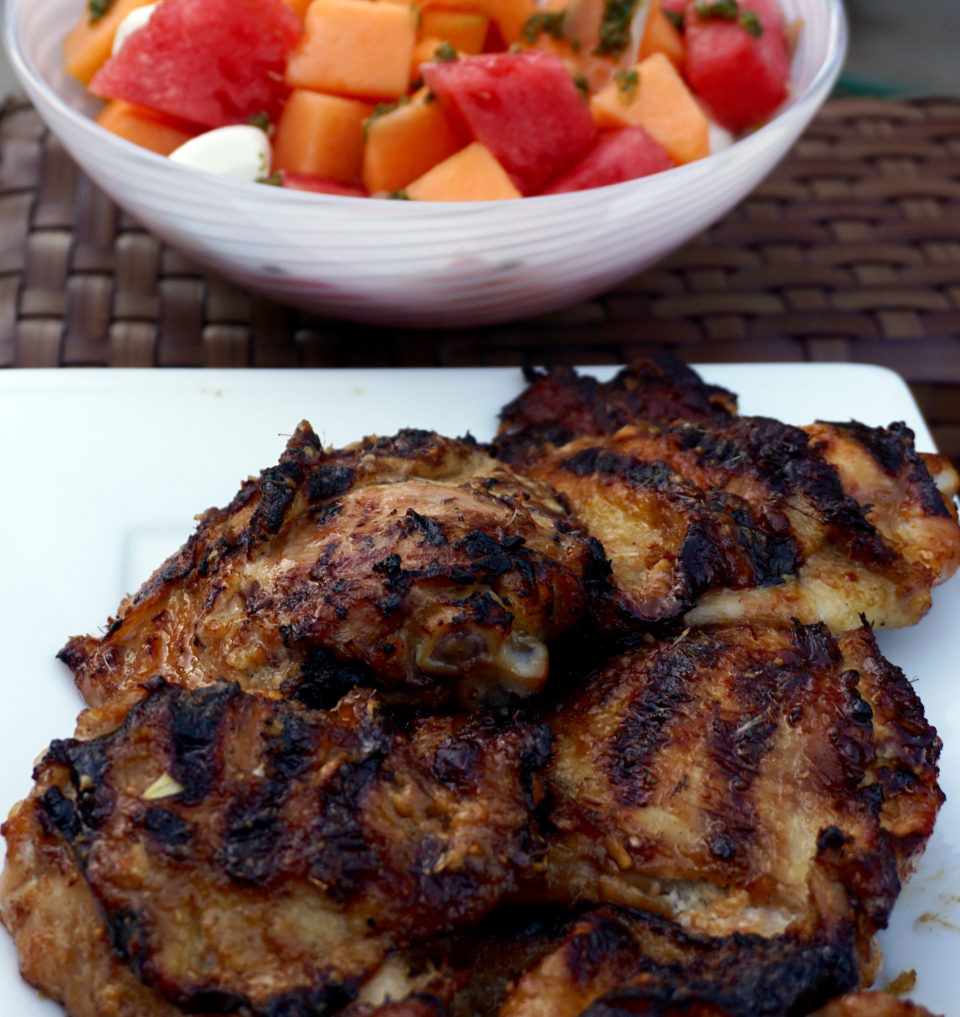
Don’t let the list of ingredients scare you off. Most are readily available at Asian markets and at Whole Foods or Safeway. In a pinch I have used lemon peel for lemongrass. Though not as nuanced as lemongrass, lemon peel will add that citrusy flavor to your chicken. Fish sauce adds umami (flavor) and a bit of pungency that kicks it up a notch. Just thinking about this is making my mouth water!
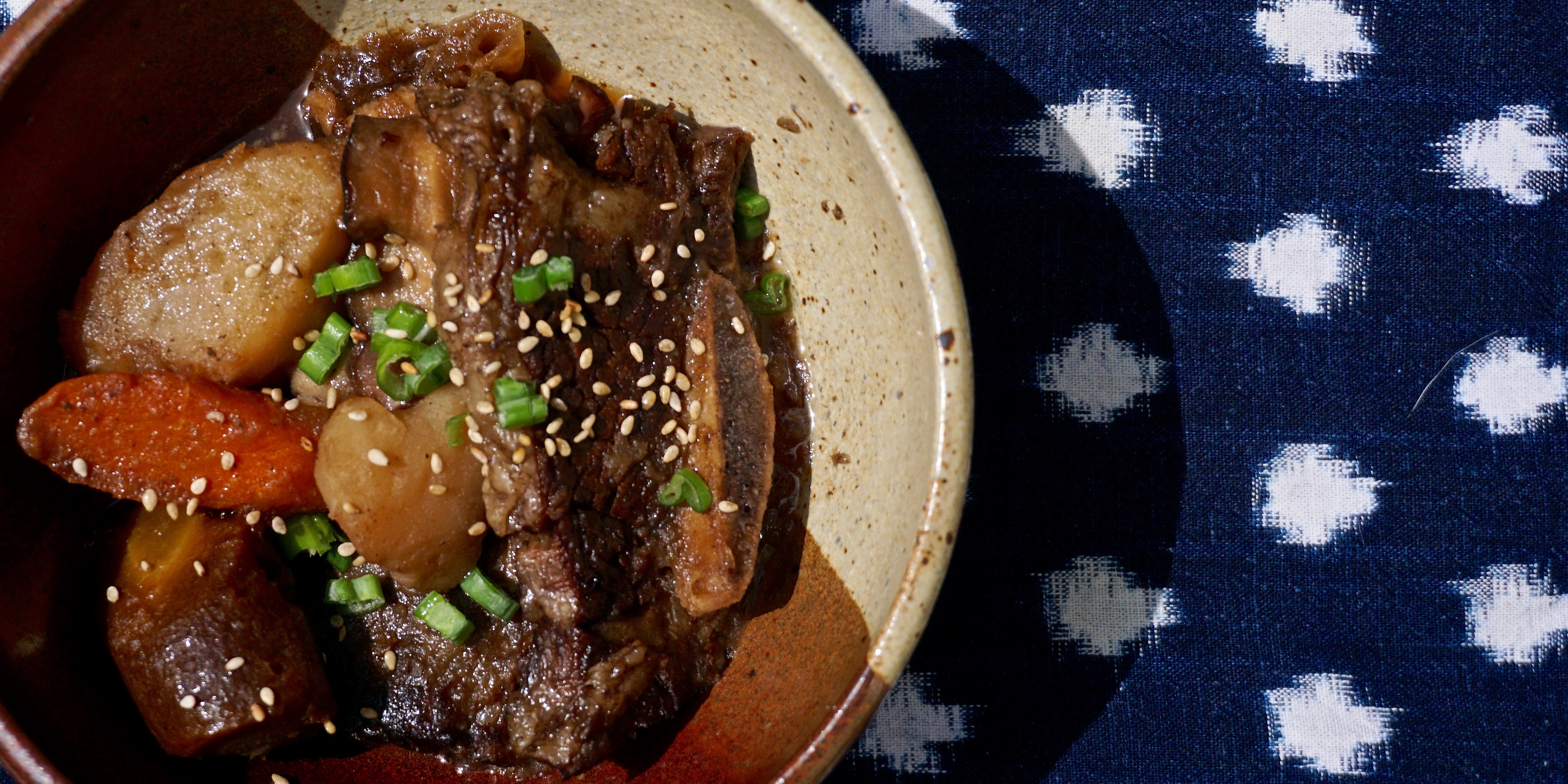
Last week felt like winter’s last stand. The temperature dropped, it rained (yay, we can always use the precipitation even when summer is just around the corner) and Jamie and I were hit with the cold/flu bug. So, despite being the month of May I found myself wishing for something hearty, warming and comforting. I stumbled upon an amazing website while looking for a recipe for Galbi Jim, a Korean beef rib stew I knew would chase away my rainy day and cold blues. Just the name of the site alone won me over, Spoonforkbacon. The site is loaded with tips, ideas and recipes and the photography is wonderful. Their food looks absolutely scrumptious. I’ll definitely be wandering over often for inspiration.
This is a delicious Korean version of beef stew. Seasoned with soy, garlic, sesame, sugar and mirin it has that sweet salty flavor profile I love. The Asian pear adds sweetness and serves as a tenderizer. If you can’t find an asian pear a fine stand-in would be a kiwi. I found multi-color organic carrots at TJ’s and fresh shiitake mushrooms that worked beautifully in the dish. Feel free to play with amounts. If you want it less sweet, cut the sugar back to 1/4 cup. I used cross cut short ribs also known as flanken style or hawaiian style ribs. The pieces are much thinner, approximately 1/2 to 5/8 inch thick which shortens the cooking time considerably. If using this cut, reduce the cooking time accordingly. Bring the ribs to boil for only 5 to 10 minutes depending on thickness. Drain ribs, add seasonings and water and cook for approximately 30 minutes until ribs are just tender, add vegetables and simmer additional 20 minutes. Additional water can be added if needed. You can add a medium onion, quartered to this recipe (at the same time when seasonings and water are added to beef) if you like. I also think this stew would work well using pork or chicken. This is really a homey, easy dish, try it before the weather gets too warm! Here is the recipe from SpoonForkBacon. Check out the site, after all everything’s better with BACON!
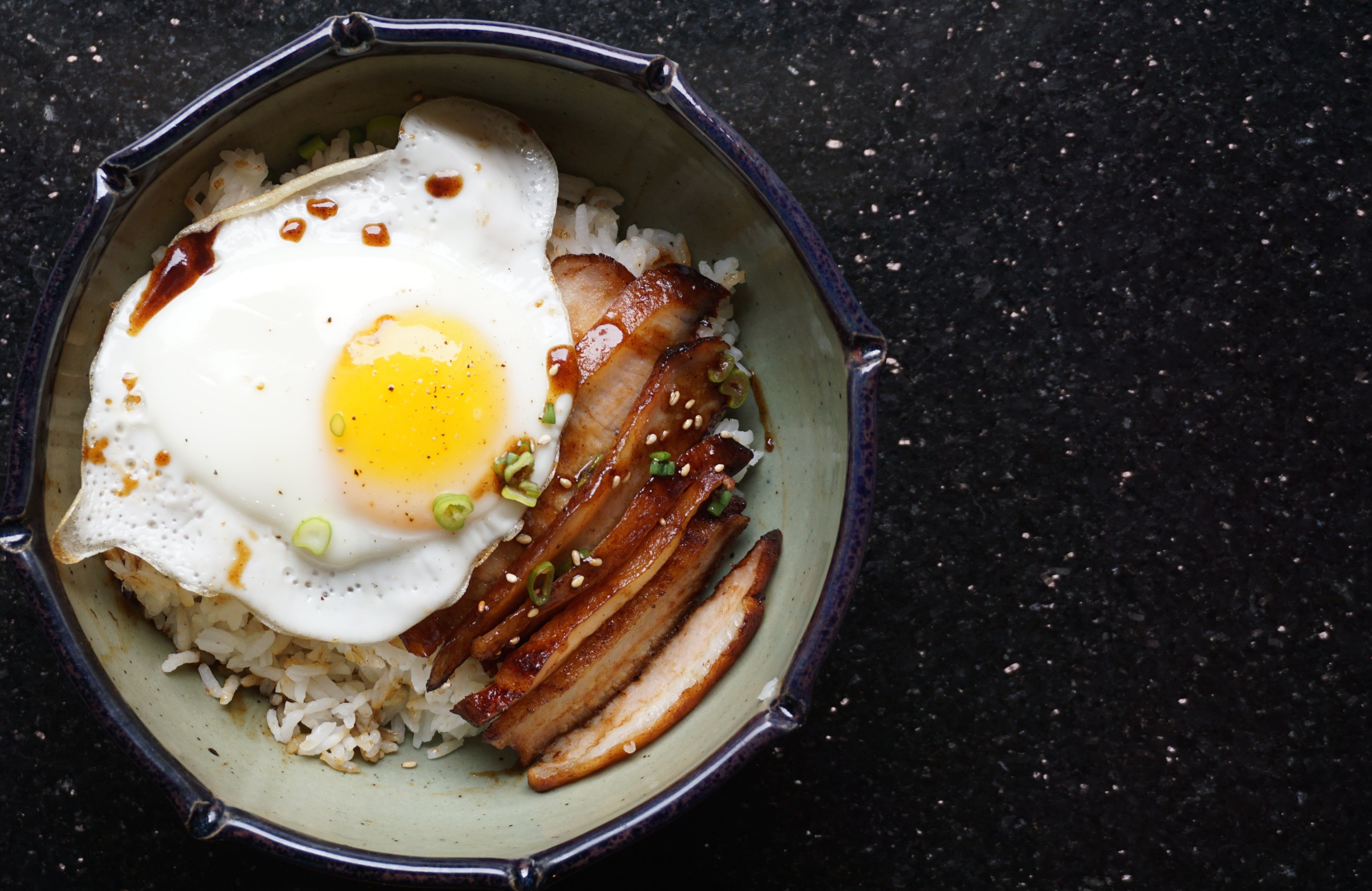
I love Sunday morning breakfast. Instead of the rushed quick bite Monday through Friday grind, weekend breakfasts are leisurely and quite the production.Waffles, pancakes, bacon, sausage, scrambled eggs, and homemade buttermilk biscuits or if we are feeling ambitious, puffy French omelets. Just brewed coffee and fresh-squeezed orange juice round out the meal, or mimosas for special occasions, ahhhhh the good life. Often, our Sunday breakfasts will have an Asian vibe.
During football season you will always find a big pot of congee sitting on the stove. Congee or jook is a delicious savory rice soup and is great for breakfast or halftime. The soup starts with chicken stock flavored with ginger and scallions. Add rice and simmer until the kernels have softened to an almost creamy consistency. Hot steaming bowls are brought to the table where everyone adds their own toppings. Shredded chicken, green onions, pickles, lettuce, and cilantro. To go along with the jook, Chinese donuts–deep-fried pillows of yumminess that give beignets a run for their money.
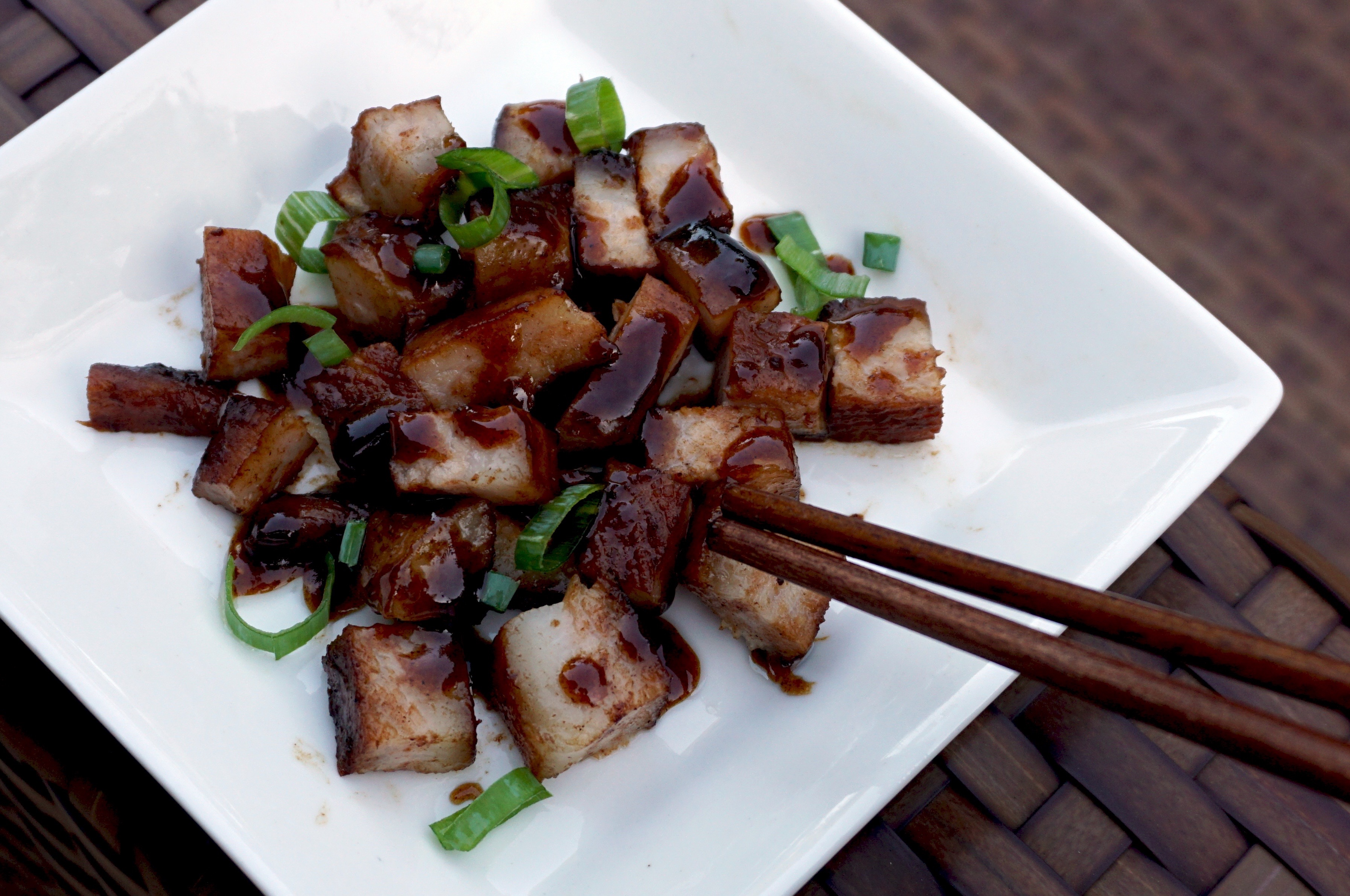
Hands-down, a favorite breakfast for my kids is homemade Chinese bbq pork (char siu) served with eggs–barely scrambled or sunny side up (keep that yolk runny) on top of a bowl of steamed white rice. I found a new recipe for char siu on Burp Appetit’ that looked and sounded mouthwateringly good. Naturally, I had to try it. Instead of oven roasting, it calls for braising the pork in a sweet, salty sauce which includes hoisin paste and 5 spice powder. By braising, we don’t need marinading which shortens the cooking time. Best of all, it’s delicious! With a batch of char siu made, this past Sunday’s breakfast was a no-brainer, Char siu, eggs, and rice. Yep living life one bowl at a time.
Char Siu and Egg over Rice: Anatomy of a Breakfast Bowl
The perfectly cooked egg by Jamie
Kid tested and approved by Jordan
Hi Claire 🙂

The ultimate comfort food is the food you ate as a kid. In our family, my Dad was the cook. The last 30 minutes of his workday found him running around Chinatown for dinner groceries. He haggled with the fishmonger for the freshest catch of the day or gossiped with the store clerks as he picked through piles of fresh snap peas. Some of my favorites included steamed fish with soy, ginger and onions, stir-fried beef with pickled vegetables, and scrambled eggs with bbq pork.
Dad (BaBa) cooked for fun, but for my grandfather (Gung Gung) it was his livelihood. He worked as a chef at the Original Joe’s on Broadway and also at the legendary Tonga Room at the Fairmont Hotel. To this day I have no idea what he cooked at these iconic San Francisco restaurants. Every meal he made for me and my brother was rooted in Chinese comfort food. We ate dinner with him a couple of times a week right before he went off to work.
In his tiny room above Jackson Cafe in Chinatown, he would spread the China Daily on the table, pull out chopsticks, rice bowls, and a tiny shot glass. The shot glass held a “digestive” he would swig right before eating. He cooked in a communal kitchen down the hall. A well-worn oval metal tray, a remnant from his restaurant days, sat wedged between the burners and wall at the ready to ferry our meal to his room.
We usually sat waiting, impatiently, stomachs growling and legs swinging in anticipation, as he made the long trek back to his room. As we ate he regaled us with stories from his childhood. We feasted on steamed pompano with black bean sauce, stir-fried greens with garlic and onions, steamed pork with fermented shrimp paste, or slices of bbq pork (char siu). My comfort food.
These days I make my own Char Siu. The marinade is adapted from a cookbook I found years ago in Chinatown, Authentic Chinese Cooking by Sharon Hoy Wong. Long out of print, it is my go-to cookbook for the down-home food of my childhood. Serve Char Siu as an appetizer, stir-fried with greens or eggs, noodle topping, or as a filling in buns. Our entire family loves the play on the sweet and salty flavor combination.
The marinade is also delicious for grilled baby back ribs.
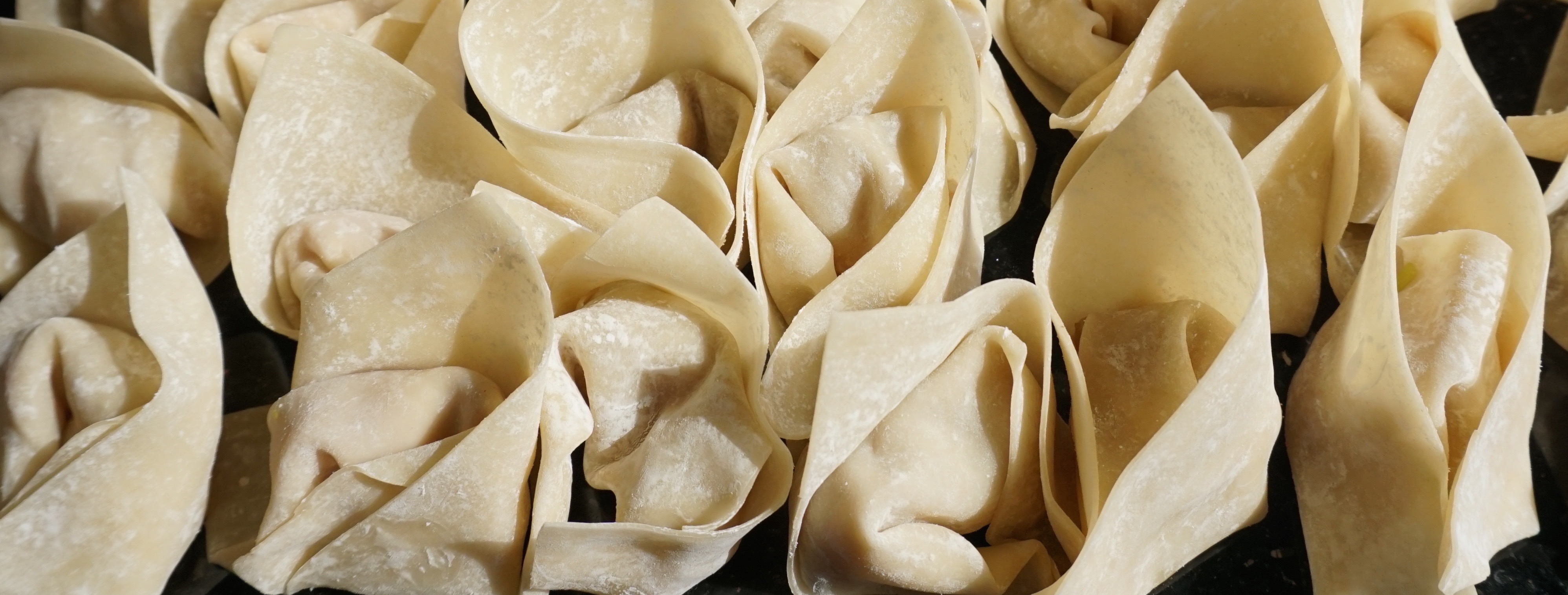
My mom came down and spent the week with us recently. She is 93 years old and still lives in San Francisco in the same house I grew up in. Her memory has faltered and her cognitive skills have diminished but she soldiers on. I am thankful that she is still with us and grateful for the moments we have together. It is now our turn to take care of her, everything comes full circle.
When she visits we talk about family. She remembers snippets of when she was younger, she laughs at my exasperation with my kids. She doesn’t cook much anymore but she likes to make wontons for the kids when she visits. When I was in college she would make trays of wontons, freeze and pack them, ready for me to take back to Berkeley after a weekend visit. When the kids were small she would make wontons for them during her babysitting stints,
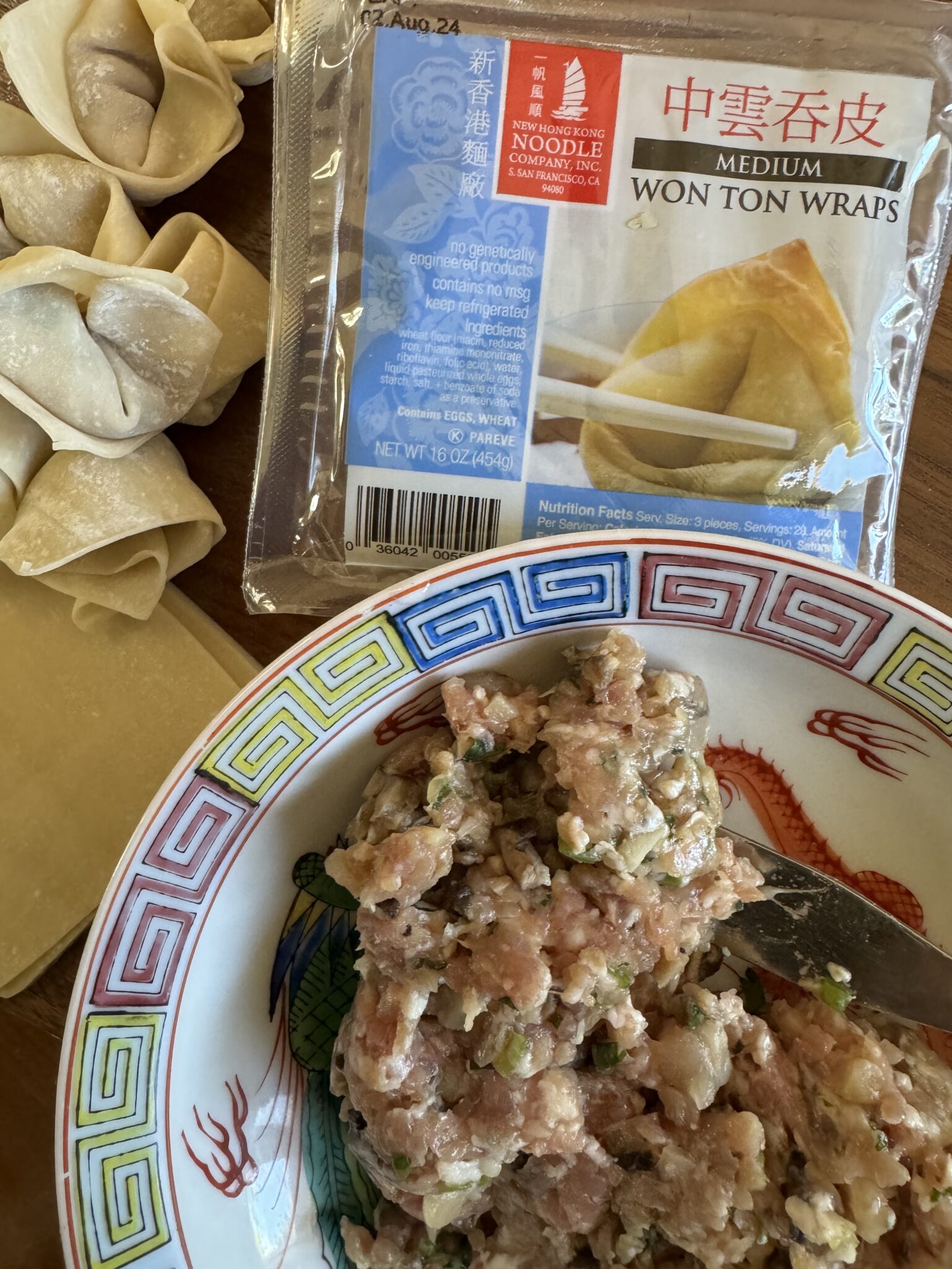
We used medium wrappers for this batch but I generally use thin wrappers which are good for won ton soup and fried won tons.

We head to the Asian market to shop for freshwater chestnuts (no canned stuff for her), pork (not pre-ground, too mushy), mushrooms, wrappers, and shrimp (raw & unpeeled). Back at home, she insists on making the filling as she has for so many years, chopping the pork and shrimp by hand and incorporating the seasonings with her Chinese cleaver. We reserve some of the filling for mini stuffed omelets called Gai Dan Kok (kid favorite) and then we sit, talk, and fold won tons. We fill as many trays as we have of wrappers or filling, and store them in the freezer. When the kids come home she will boil up a batch or fry egg dumplings for them. These are the moments I will treasure.
Mom makes classic pork and shrimp filling for her wontons. It is my go-to filling for not just wontons but for egg dumplings and steamed stuffed squash. It’s delicious. The shrimp can be chopped with the pork and blended with it or cut into 1/2 inch pieces and a couple of pieces placed in each wonton as shown in the video below. Soaking the shrimp in potassium carbonate firms up the shrimp giving the wonton a nice bite. You could probably forego this step. I added 1 tsp Ponzu (or you could use soy sauce and a squeeze of lemon) and 1/2 tsp sesame seed oil to the shrimp for flavor.
These wontons can also be fried. Heat oil in a large pot to 350-375 degrees. Fry in at least 2 inches of oil in the pot. Cook in batches of 6-8 won tons. Fry to golden brown and remove to a paper towel-lined pan to drain off excess oil. Serve with a sweet and sour sauce or ketchup.
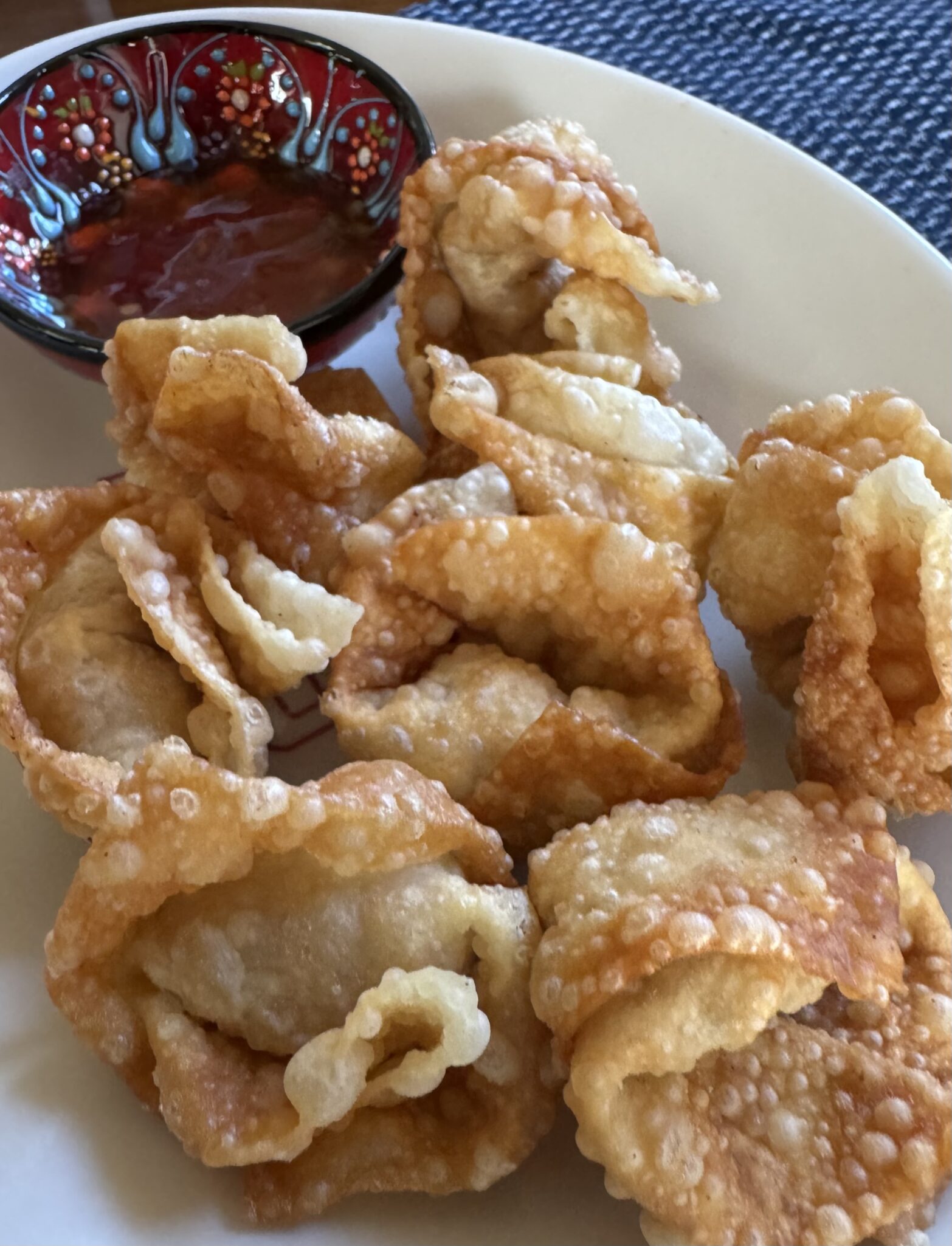
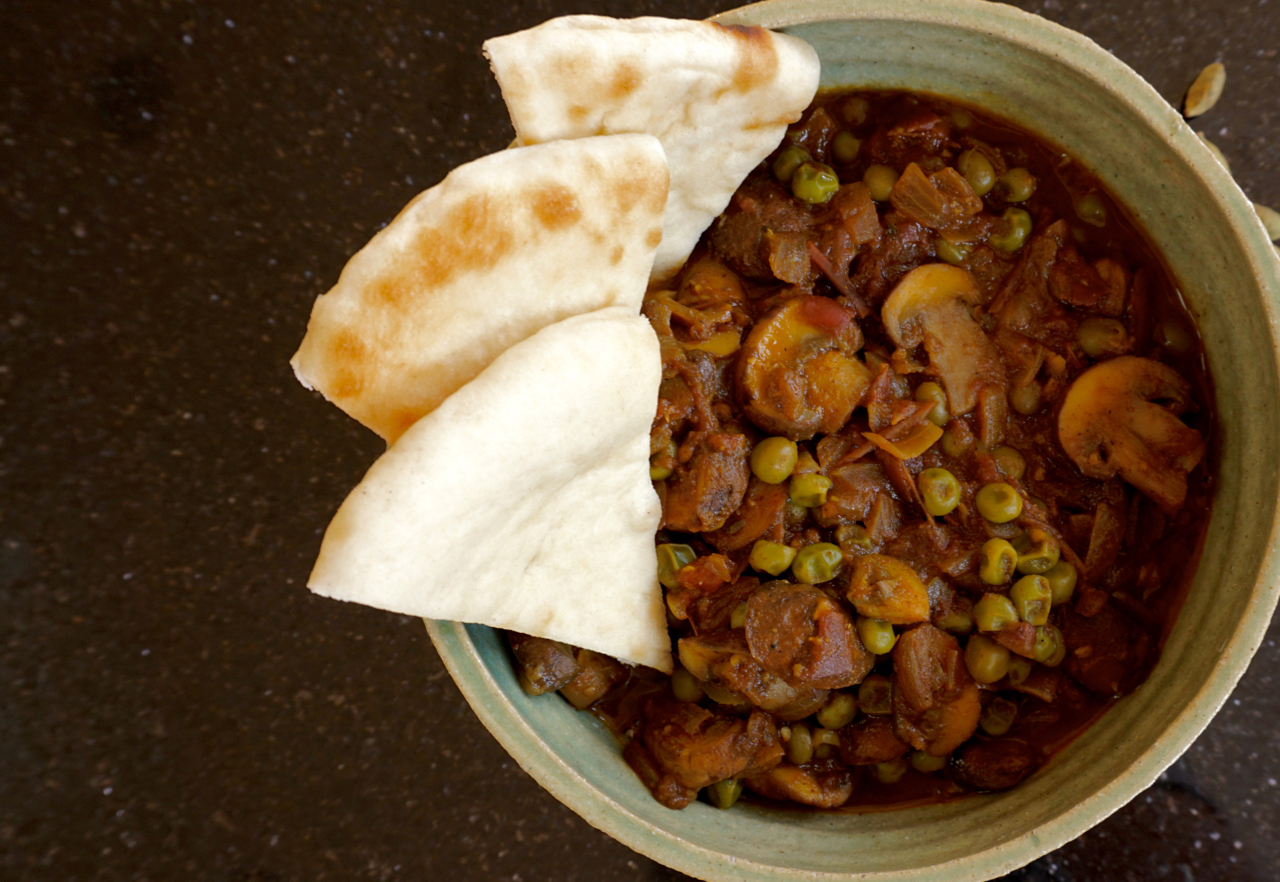
As I fixate on cookies for the holiday season, Wes continues his quest for interesting, delicious vegetarian dishes. Not surprisingly this often means Indian food. We had stopped at our favorite hole in the wall one evening and tried their Mushroom Matar. We weren’t disappointed. Peas and mushrooms surrounded by a sweet savory sauce. The dish was a respite from the heat of the Biryani and Palak Paneer. I am a wimp when it comes to spicy so I thoroughly enjoyed this dish. I greedily wiped the last bits of sauce off the bowl with my naan beating Wes to the punch. Dude, you snooze you lose.
We found a tasty recipe on the website/blog Veg Recipes of India. A wonderful blog that contains a treasure trove of useful information, step by step instructions, photos and recipes for novices like Wes and me. I found the dish actually tasted better the next day as the spices seemed to meld together a bit more. The recipe and step by step instructions for Mushroom Matar can be found on Veg Recipes of India.
Enjoy! Now back to my cookie obsession…..